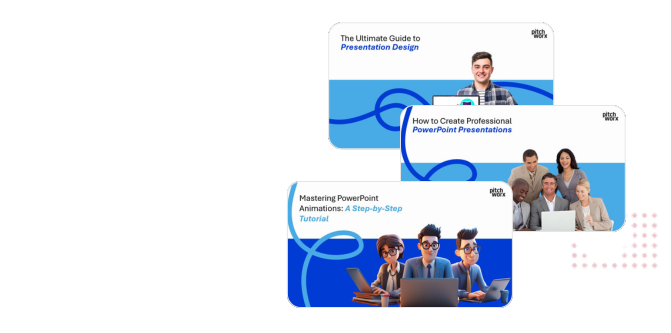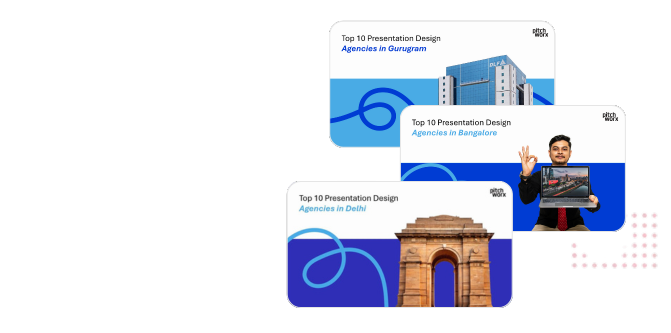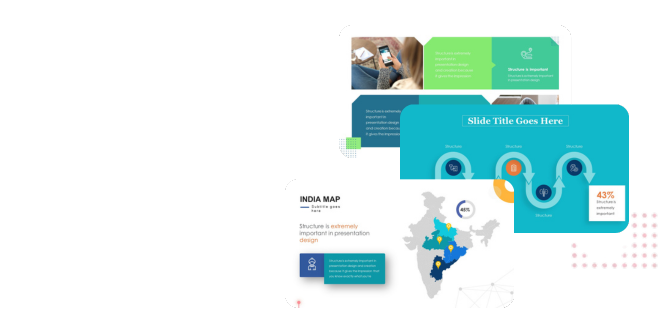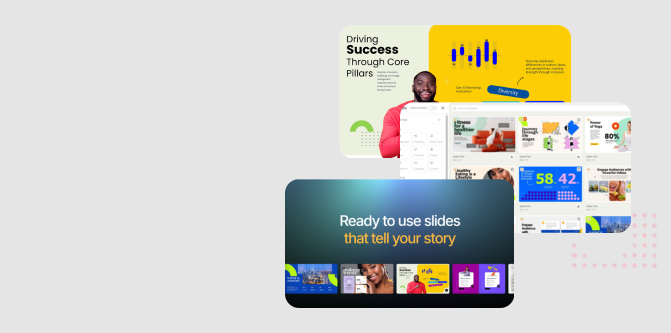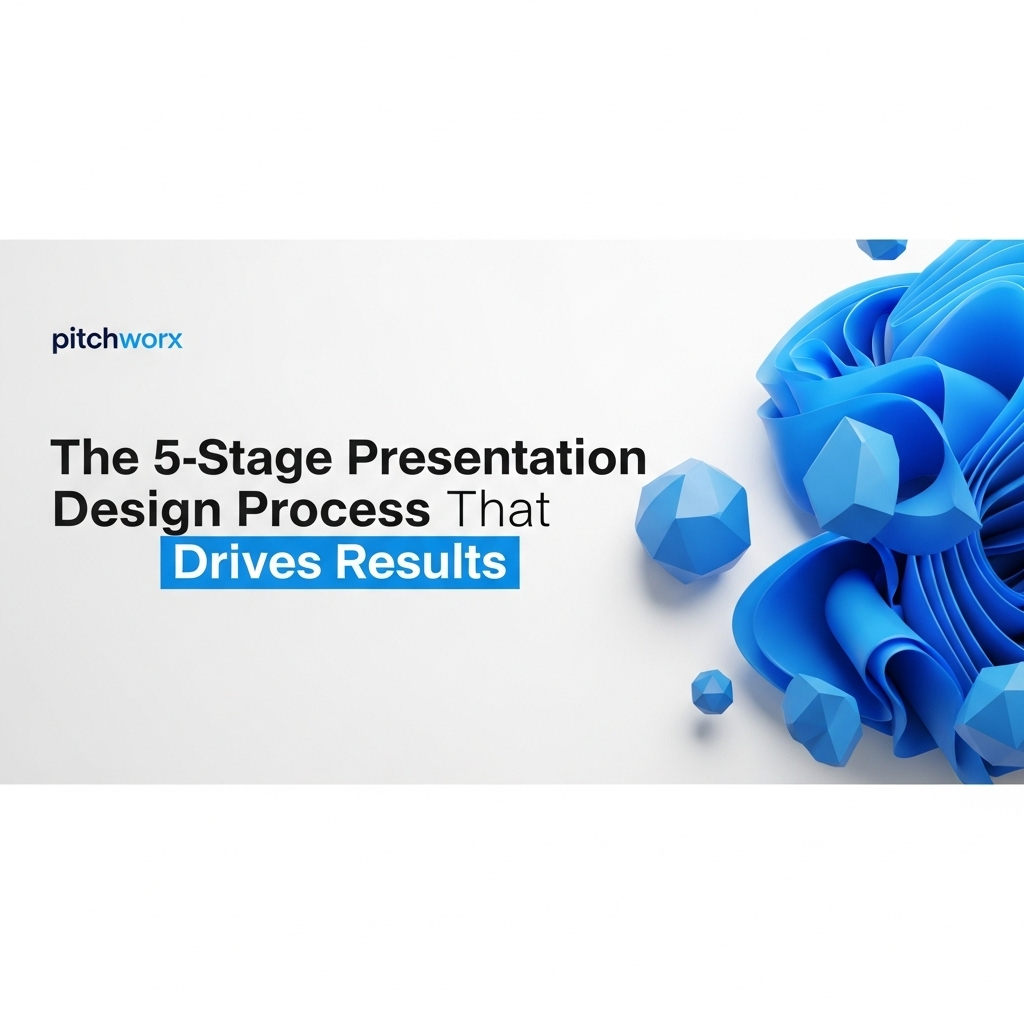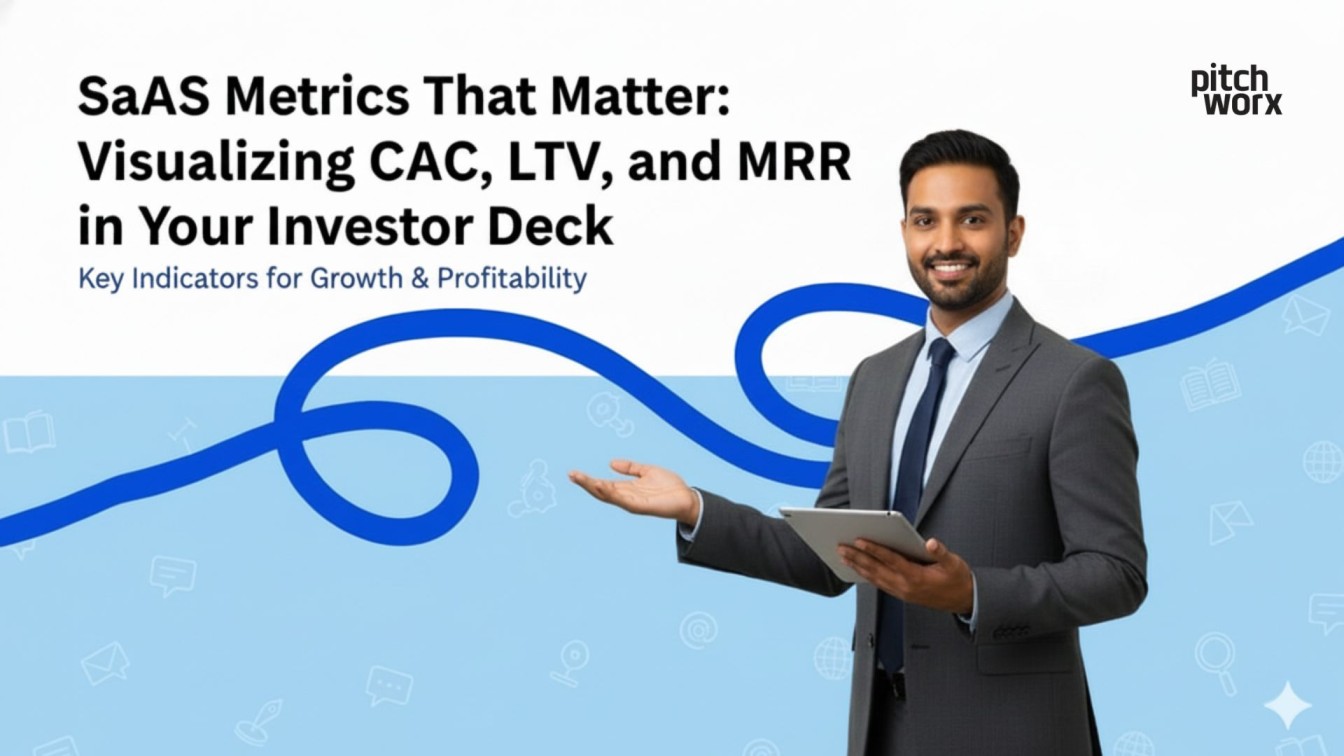A presentation is not a document. Yet, countless hours are wasted treating it like one—a collection of text and charts emailed back and forth, endlessly tweaked, and ultimately “decorated” by a designer as the final step. This approach consistently fails because it misses the fundamental point: a presentation’s job is to persuade, inform, and inspire action. Achieving that requires more than just good design; it demands a rigorous, strategy-first presentation design process. At PitchWorx, we’ve spent over a decade refining this workflow, moving beyond aesthetics to build communication tools that deliver measurable results.
This article pulls back the curtain on the strategic framework that separates high-impact presentations from the forgettable slide decks that fill most corporate servers. We’ll explore why generic processes fail, outline the core components of an effective agency workflow, and provide a step-by-step breakdown you can adapt to elevate your own communications.
Quick Answer
A professional presentation design process transforms ideas into strategic communication assets. With audiences forming first impressions in milliseconds, a structured workflow is crucial for impact. According to Nielsen Norman Group research, users often decide whether to stay on a page in under 10 seconds. An effective process involves:
- Deep-dive discovery to align on goals and audience needs.
- Narrative scripting and storyboarding to build a compelling message.
- Data-driven visual design, refinement, and delivery.
Table of Contents
- The Problem: Why Generic Presentation Processes Fail
- Root Causes of an Ineffective Design Workflow
- The Solution: An Agency’s Strategic Presentation Design Process
- Inside the PitchWorx Process: A 5-Stage Breakdown
- Measuring Success: KPIs Beyond ‘Looking Good’
- Frequently Asked Questions
- Conclusion: From Process to Performance
The Problem: Why Generic Presentation Processes Fail
The most common presentation process inside a corporation looks something like this: a subject matter expert writes pages of text, a manager shortens it, it’s passed around for feedback, and finally, it lands in a designer’s lap with the instruction, “make it look good.” This is not a design process; it’s a documentation process with a coat of paint. It fails because it treats the presentation as a container for information rather than a vehicle for a message.
This broken workflow leads to predictable, mediocre outcomes: dense slides that presenters read aloud, visuals that are decorative rather than explanatory, and a core message that is buried under layers of corporate jargon. The consequences are significant. According to McKinsey research, storytelling can make information more memorable and engaging—a critical element that generic processes completely ignore. When the story is absent, the audience disengages, and the opportunity is lost.
Root Causes of an Ineffective Design Workflow
Understanding why these workflows fail requires digging into the root causes. From our 13+ years of experience rescuing presentations, we’ve identified a consistent pattern of foundational flaws that plague internal teams.
Cause 1: Lack of a Strategic Foundation
Most projects begin with a “brief” that is little more than a content dump—a Word document or a collection of old slides. Key strategic questions are rarely asked, let alone answered: What is the single most important idea we need to convey? What do we want the audience to think, feel, and do after the last slide? Without this strategic clarity, the design is untethered from any business goal.
Cause 2: The ‘Assembly Line’ Fallacy
Content, design, and delivery are treated as separate, sequential steps. The writer finishes, then the designer starts. This assembly line model prevents collaboration and creates silos. A designer who understands the core message from the beginning can offer structural and visual ideas that enhance the narrative, but they are rarely brought in early enough. This is especially damaging for complex narratives like the ones needed for effective investor pitch decks, where the story and visuals must be perfectly intertwined.
Cause 3: Design as a Subjective Art
When strategy is absent, feedback on design becomes purely subjective. Comments like “I don’t like that blue” or “Can we make the logo bigger?” dominate review cycles. A professional process reframes design as a series of deliberate choices made to achieve a specific communication goal. Is the layout guiding the audience’s eye? Does the color palette evoke the right emotion? Does the data visualization clarify a complex idea? This objective-driven approach silences subjective noise.
The PitchWorx Approach
With over 13 years of presentation design experience and more than 150,000 slides created, PitchWorx is an ISO 27001 certified agency trusted by Fortune 500 companies. Our process is built on a foundation of strategic partnership, ensuring every slide we design is purpose-built to achieve your business objectives across US, India, and UAE markets.
The Solution: An Agency’s Strategic Presentation Design Process
A professional agency doesn’t just “design slides.” It orchestrates a comprehensive process that merges strategy, storytelling, and visual communication into a single, cohesive workflow. The goal is to create a powerful tool for persuasion, not just a visually pleasing report. This shift in mindset from task-based execution to goal-oriented strategy is the fundamental difference.
Below is a comparison highlighting the critical differences between a standard internal workflow and a strategic agency process. Notice how the focus shifts from ‘what the slides contain’ to ‘what the presentation achieves’.
| Aspect | Generic Internal Process | Strategic Agency Process |
|---|---|---|
| Starting Point | A dense Word document or existing slide deck (“the content”). | A strategic brief focused on audience, goals, and desired action. |
| Content Flow | Linear, following the structure of the source document. | Narrative-driven, structured like a story with a clear arc. |
| Role of Design | Aesthetic layer applied at the end to “make it pretty.” | Integrated from the start to clarify, simplify, and persuade. |
| Key Metric of Success | Approval from all internal stakeholders. | Audience understanding, engagement, and action. |
| Final Output | A “slideument”—a document that looks like a presentation. | A focused communication tool designed for a speaker and an audience. |
Inside the PitchWorx Process: A 5-Stage Breakdown
To make this tangible, here is the five-stage presentation design process our team follows. This framework ensures that every project is grounded in strategy and meticulously executed to meet and exceed client objectives.
Stage 1: Strategic Discovery & Alignment
This is the most critical phase. Before a single slide is created, we conduct an in-depth discovery session. We work with stakeholders to define the presentation’s primary objective, profile the audience’s needs and biases, and establish the key takeaways. We gather all source materials, not as a script to be followed, but as a pool of information from which we will extract the core story. The output is a creative brief that acts as our strategic north star for the entire project.
Stage 2: Narrative Architecture & Storyboarding
With a clear strategy, we move to structuring the message. We don’t write paragraphs; we build a narrative arc. This involves identifying the inciting incident (the problem), the rising action (the solution), the climax (the core value proposition), and the resolution (the call to action). We outline this flow in a storyboard, often as simple text in a document or on virtual whiteboards. This step ensures the logical and emotional flow of the argument is sound before any visual design begins. Crafting the right narrative for internal town halls and corporate decks is fundamentally different from a sales pitch, and this stage is where that distinction is made.
Stage 3: Visual Concept & Design System
Once the story is locked, we translate the strategy into a visual language. This phase starts with creating two or three distinct visual concepts, often presented as a “look and feel” exploration on a few key slides. These concepts explore different approaches to typography, color, imagery, and iconography. After the client selects a direction, we build out a full design system: master slide layouts, data visualization styles, and usage guidelines. This ensures consistency and quality throughout the deck.
Stage 4: Content Integration & Data Visualization
This is where the story and the design system merge. Our designers populate the approved layouts with the storyboarded content. The focus here is on conceptualization, not decoration. A slide with five bullet points might become a compelling diagram. A complex table is transformed into an insightful chart that reveals the key trend at a glance. We simplify text, sharpen headlines, and ensure every element on the slide serves the core message of that slide.
Stage 5: Refinement, Delivery & Asset Management
The final stage involves meticulous refinement. We conduct rigorous quality checks for consistency, clarity, and brand alignment. After incorporating client feedback, we prepare the final files in the required formats (e.g., editable PowerPoint, PDF, Google Slides). But our work doesn’t stop there. We often provide a “component library” of key slide layouts and assets, empowering the client’s team to create new, on-brand presentations efficiently in the future.
Measuring Success: KPIs Beyond ‘Looking Good’
The success of a strategic presentation design process isn’t measured by compliments on the color scheme. It’s measured by its impact on the business. A truly effective presentation is an asset that generates a return, and tracking the right Key Performance Indicators (KPIs) proves its value.
As described in research from The Science of Storytelling by Harvard Business Review, presentations that resonate on an emotional and narrative level are far more persuasive. This persuasive power is what we aim to measure.
For Sales Decks
Conversion Rate
Did the percentage of meetings that advanced to the next stage increase?
For Investor Decks
Follow-up Rate
What percentage of investors requested a follow-up meeting or due diligence?
For Corporate Decks
Adoption & Usage
Are teams using the new template correctly? How often is the master deck accessed?
By shifting the conversation from aesthetics to outcomes, you can demonstrate the immense strategic value that a proper presentation design process brings to an organization. It becomes an investment in clearer communication, which always pays dividends.
Related Services
Frequently Asked Questions
How long does a professional presentation design process take?
The timeline for a presentation design process can vary widely based on complexity, number of slides, and client responsiveness. A standard corporate presentation of 20-25 slides typically takes between 2 to 4 weeks from initial discovery to final delivery. High-stakes investor pitches or decks requiring extensive custom illustration may take longer.
What is the most overlooked stage in the presentation design process?
The Narrative Architecture & Storyboarding stage is by far the most overlooked yet most critical. Many clients want to jump directly into visual design from their raw content. However, structuring the story first ensures the final presentation has a logical, persuasive flow. Skipping this step is the primary reason why so many decks end up feeling like disconnected lists of facts.
How much input do clients have during an agency’s design process?
A great presentation design process is highly collaborative. At PitchWorx, clients are integral at key milestones: the initial discovery session, the storyboard review, the visual concept selection, and the final refinement stages. The process is structured to gather strategic input at the beginning and focused feedback later, ensuring efficiency and alignment without overwhelming the client with minor decisions.
What is the difference between a presentation designer and a graphic designer?
While there is overlap, their focus differs. A graphic designer is often skilled in branding, illustration, and layout across various media. A specialist presentation designer possesses those skills but also has deep expertise in information architecture, data visualization, narrative sequencing, and the technical specificities of platforms like PowerPoint and Google Slides. They design for a live, spoken delivery context.
How do you handle confidential information during the design process?
Security is paramount. A professional agency should have robust protocols. At PitchWorx, we are an ISO 27001 certified company, adhering to the highest global standards for information security management. This includes signing Non-Disclosure Agreements (NDAs), using secure file transfer systems, and having strict internal data access controls to ensure all client information remains confidential.
Can a strategic process be applied to improve existing presentations?
Absolutely. This is a common request. The process starts with a strategic audit of the existing deck. We analyze its structure, messaging, and design against its intended goals and audience. From there, we might recommend restructuring the narrative, redesigning the visuals according to a new system, or a combination of both to transform it into a more effective communication tool.
Conclusion: From Process to Performance
Investing in a professional presentation design process is an investment in clarity and persuasion. It elevates a presentation from a simple collection of slides into a strategic asset designed to achieve a specific outcome. By shifting focus from decoration to communication, from content dumps to compelling narratives, you empower your message to cut through the noise and drive meaningful action.
Whether you are building an internal team’s capabilities or partnering with an agency, adopting a strategy-first framework is the single most effective way to ensure your presentations perform. The structure isn’t restrictive; it’s liberating. It frees your best ideas from the confines of bullet points and gives them the platform they deserve.
Ready to see how a strategic process can transform your communications? Our presentation design services help businesses across global markets create decks that deliver results. View our case studies to see our process in action.




